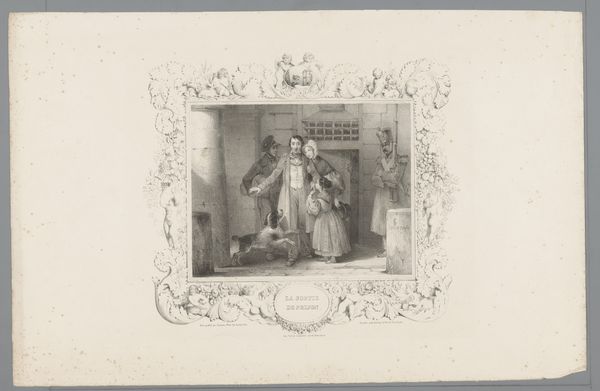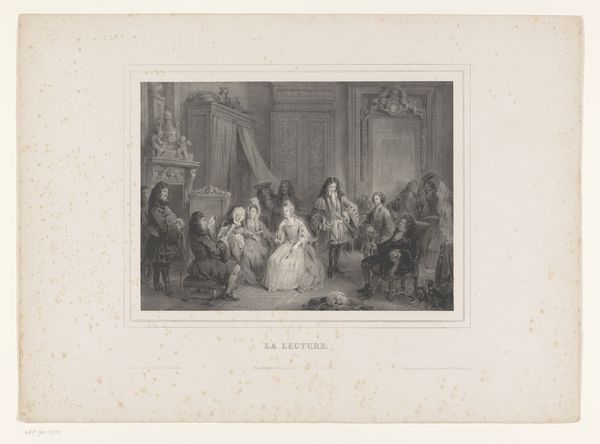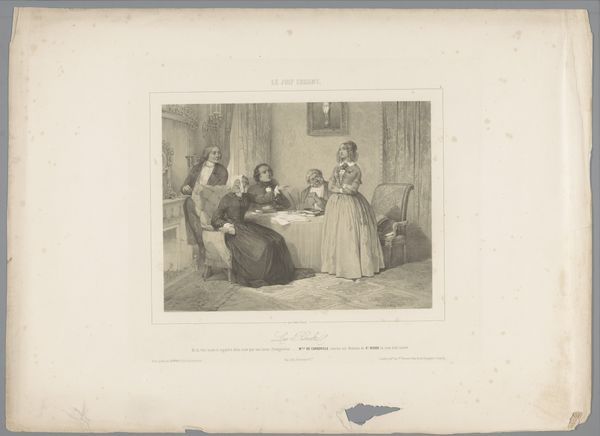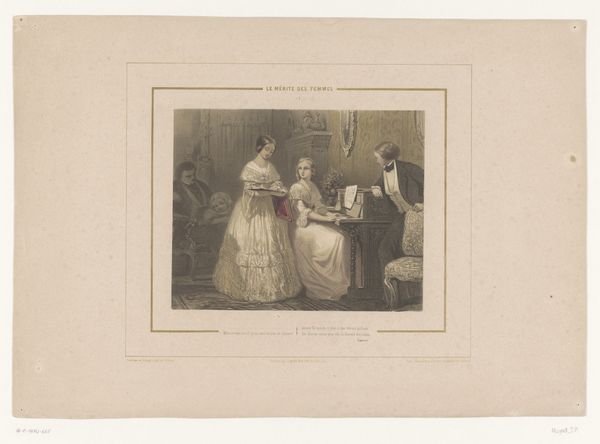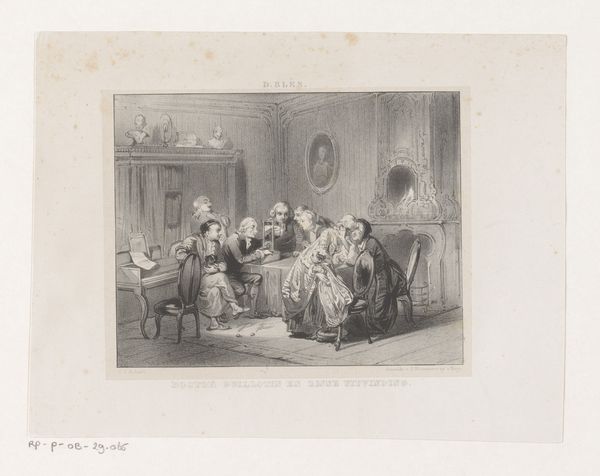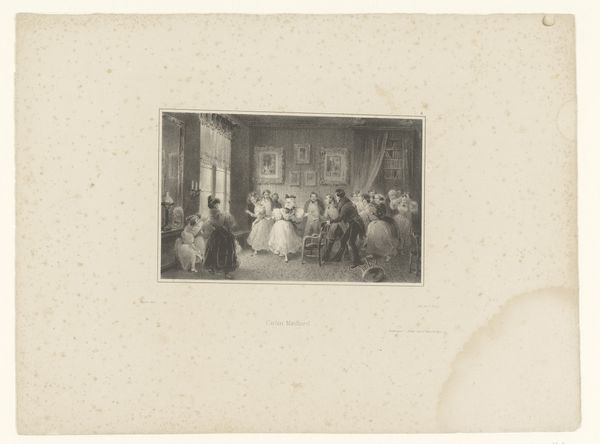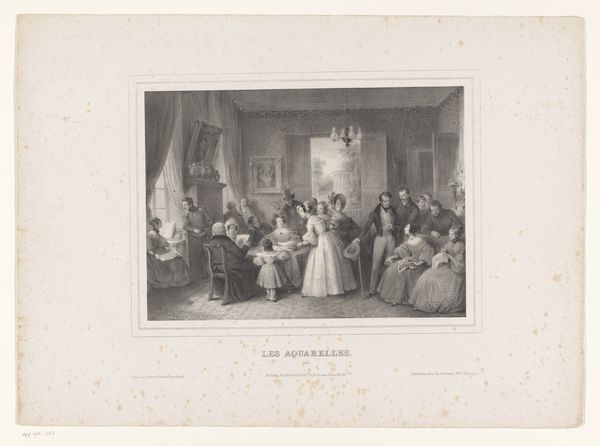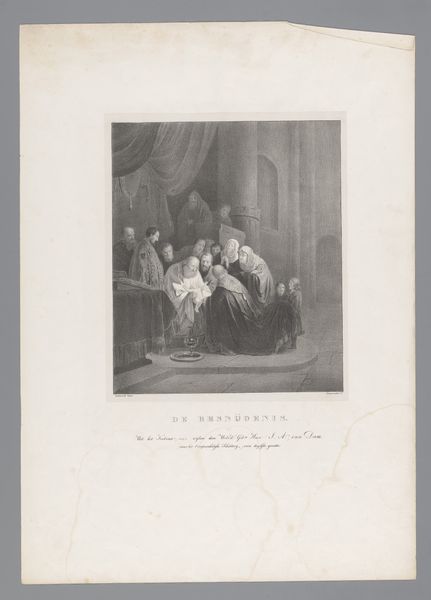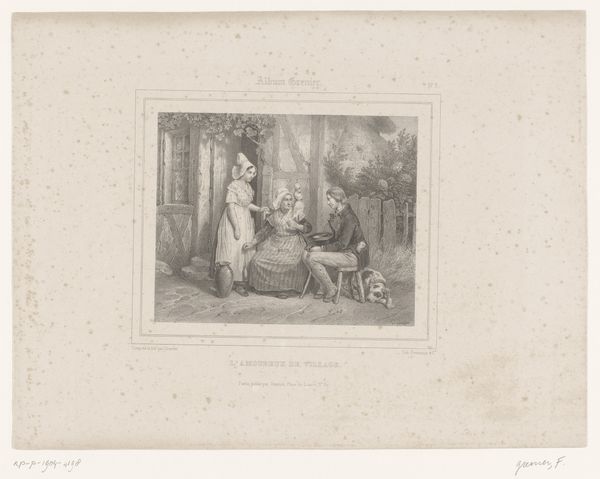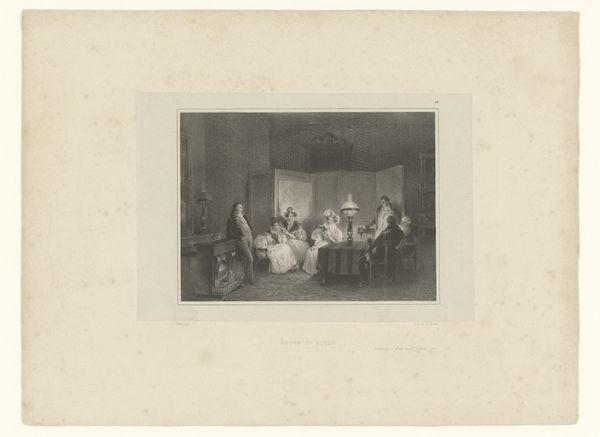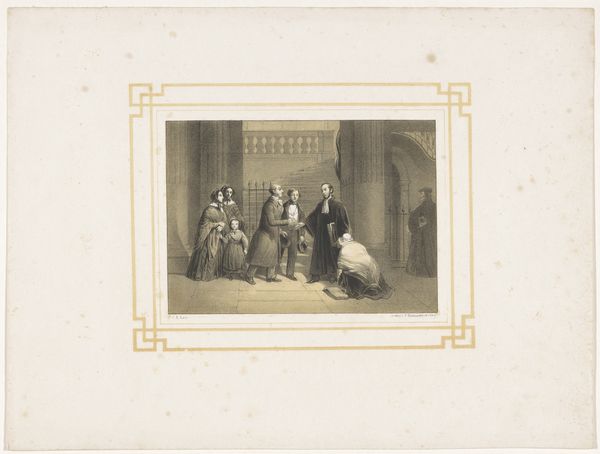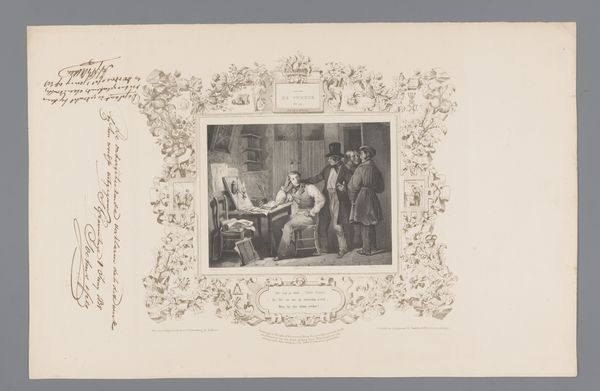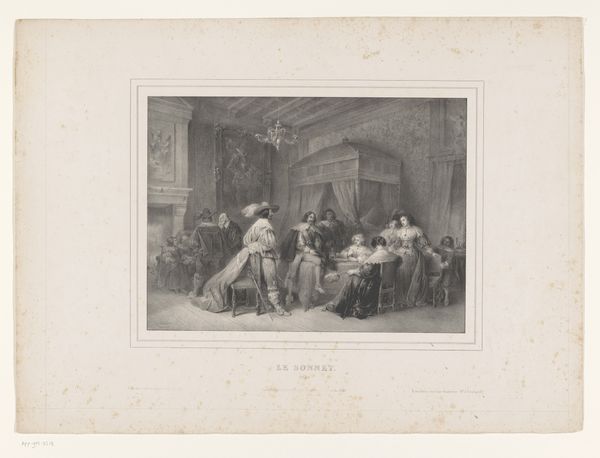
print, engraving
#
portrait
#
narrative-art
# print
#
figuration
#
romanticism
#
genre-painting
#
history-painting
#
engraving
Dimensions: height 318 mm, width 488 mm
Copyright: Rijks Museum: Open Domain
Curator: Look at the drama unfolding in Jules David’s engraving, "Pleegkind wordt opgeëist door biologische ouders" from 1836. It depicts a foster child being reclaimed by its biological parents, currently held at the Rijksmuseum. Editor: Oh, the tension is palpable! I immediately see a clash of materials, not just in the print itself but implied within the domestic setting. The coarse clothing of the biological parents versus the finer fabrics of the foster family speaks volumes about the class divide. Curator: Absolutely. David's choice of engraving allows for mass reproduction, disseminating this charged image to a wide audience. How do you see that contributing to the reception of the art, bearing in mind the cultural landscape? Editor: It’s brilliant. The very act of engraving transforms an intensely private, emotionally wrought moment into a commodity circulated through the burgeoning print market. The artist comments on family structures being mediated, packaged, and distributed as image, reflecting the emerging bourgeois ideals of domesticity. It invites debate. Curator: Yes, and consider the framing: the ornamental border softens the blow somewhat. Perhaps a means to render the scene less harsh, making it palatable for the art market but I also want to highlight how the physical characteristics of the engraving medium allow us to better understand this piece through art's public role during that period. Editor: And the figures! The distraught foster mother clutching the child contrasts with the somewhat awkwardly posed biological parents. What was David intending? A power dynamic perhaps in production of that engraving that reflects contemporary family dynamics and class relationships. Curator: Very likely, that David is portraying social structures. I am looking at all the elements the composition displays, allowing the artist to disseminate his views across broad socio-political spectra in European society during a complex time. Editor: Reflecting on that, I understand David's aim more clearly; using mass reproduction of his piece through engravings underscores the role of class, ownership, and display—crucial to considering his production. Curator: It’s fascinating how a seemingly simple engraving reveals such complexity upon closer inspection. The societal role is definitely one for today. Editor: Yes. It serves as a powerful reminder of the relationship between art and cultural discourse on its day, with themes that linger on.
Comments
No comments
Be the first to comment and join the conversation on the ultimate creative platform.
